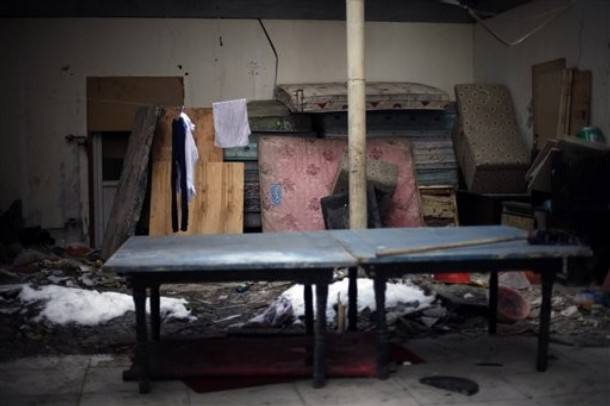Better to invoke hyperbole than face the facts, huh?
Point of fact is that the rates of "poverty" haven't been reduced one iota since 1965.
As though that's supposed to be evidence of the success of socialistic wealth redistribution?

Not long ago PoliticalChic started a thread where she claimed there is no true poverty in the United States of America. Back then I pointed out how the CON$ervoFascist Brotherhood was ALWAYS on BOTH sides of every issue. One day CON$ say that poverty is increasing to attack the war on poverty and the next day they say there is no poverty to attack the safety net programs.
The fact is that while the % of the people defined as poor has remained fairly consistent, their quality of life has greatly improved according to the Heritage Foundation.
The Myth of Widespread American Poverty
Last year, for example, the Census Bureau declared there were 36.5 million poor Americans--nearly 14 percent of the U.S. population. But a close look at the actual material living standards of persons defined as "poor" by the Census Bureau demonstrates that the Bureau's official poverty report is misleading. For most Americans, the word "poverty" means destitution, an inability to provide a Family with nutritious food, adequate clothing, and reasonable shelter. But only a small number of the 36.5 million persons classified as "poor" by the Census Bureau fit such a description.
In fact,
numerous government reports indicate that most "poor" Americans today are better housed, better fed, and own more personal property than average Americans throughout most of this century. Today, inflation-adjusted expenditures per person among the lowest-income one-fifth (or quintile) of households equal those of the average American household in the early 1970s.1
The following facts about persons defined as "poor" by the Census Bureau are taken from various government reports:
In 1995, 41 percent of all "poor" households owned their own homes.
The average home owned by a person classified as "poor" has three bedrooms, one-and-a-half baths, a garage, and a porch or patio.
Over three-quarters of a million "poor" persons own homes worth over $150,000; and nearly 200,000 "poor" persons own homes worth over $300,000.
Only 7.5 percent of "poor" households are overcrowded. Nearly 60 percent have two or more rooms per person.
The average "poor" American has one-third more living space than the average Japanese does and four times as much living space as the average Russian.2
Seventy percent of "poor" households own a car; 27 percent own two or more cars.
Ninety-seven percent have a color television. Nearly half own two or more televisions.
Nearly three-quarters have a VCR; more than one in five has two VCRs.
Two-thirds of "poor" households have air conditioning. By contrast, 30 years ago, only 36 percent of the entire U.S. population enjoyed air conditioning.
Sixty-four percent of the "poor" own microwave ovens, half have a stereo system, and over a quarter have an automatic dishwasher.
As a group, the "poor" are far from being chronically hungry and malnourished. In fact, poor persons are more likely to be overweight than are middle-class persons. Nearly half of poor adult women are overweight.
Despite frequent charges of widespread hunger in the United States, 84 percent of the "poor" report their families have "enough" food to eat; 13 percent state they "sometimes" do not have enough to eat, and 3 percent say they "often" do not have enough to eat.
The average consumption of protein, vitamins, and minerals is virtually the same for poor and middle-class children, and in most cases is well above recommended norms.
Poor children actually consume more meat than do higher-income children and have average protein intakes that are 100 percent above recommended levels.
Most poor children today are in fact super-nourished, growing up to be, on average, one inch taller and ten pounds heavier that the GIs who stormed the beaches of Normandy in World War II.

